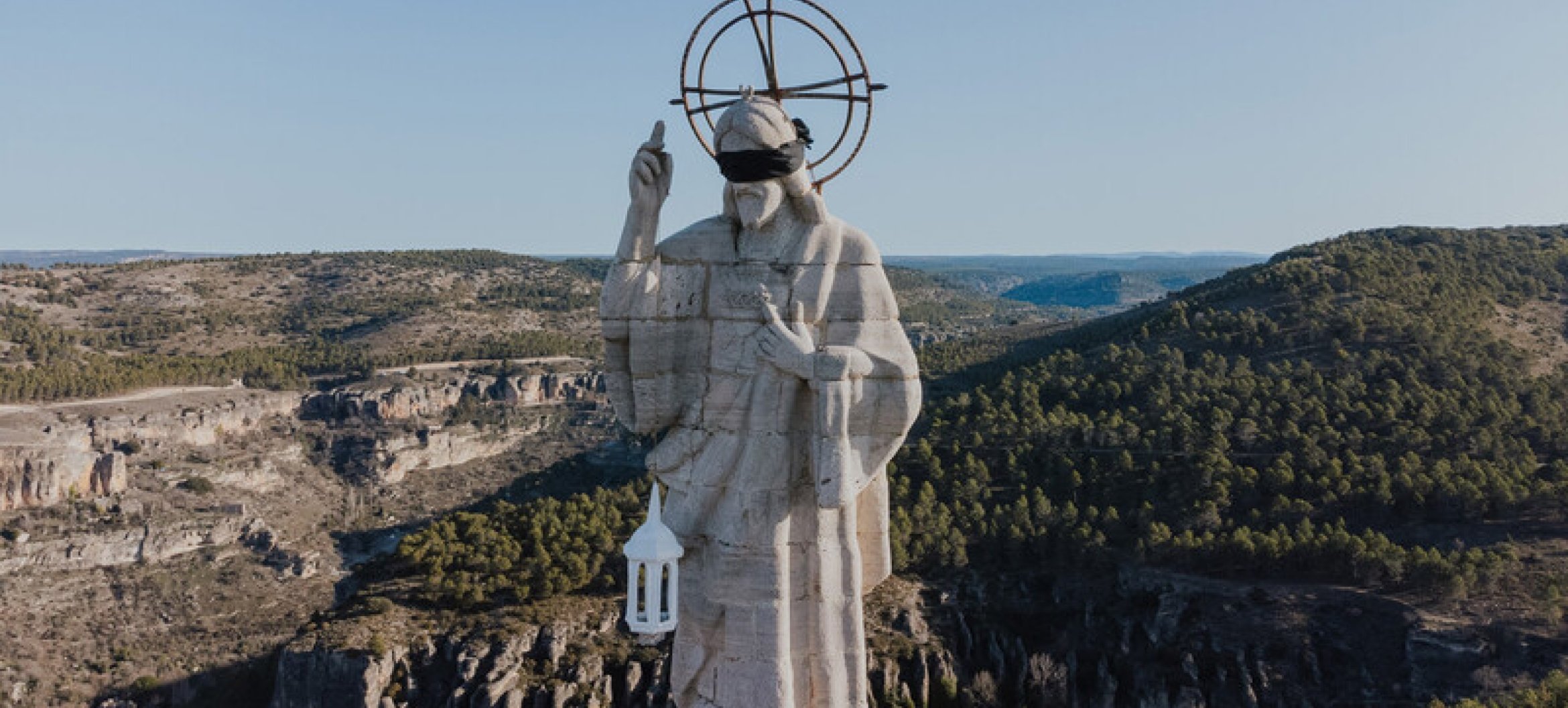SPOTTED: Fine Art alumnus David Kater tells Metropolis M about his installation that includes found objects
- Fine Art
Every year, magazine Metropolis M releases a Graduation Special, featuring work by several finals students who graduate as visual artists. David Kater (Fine Art Enschede) is one of the alumni featured in the special. Metropolis M asked David the question, "What is the story behind your work?"

It is as though two forces have collided with each other but have come to a standstill in the middle. There, in the middle, stands a long low table, on which lie a pair of scissors and an axe. David Kater (1995) has set up his sculptures as a horizontal total installation called Heavenly facts. If you approach and start viewing from the left, you follow a large, horn-shaped form as far as the table. If you start on the right-hand side, you are seemingly drawn by a floating, blindfolded head, shining a light from a headlight onto an egg that is lying on a piece of a billiard table. If that doesn't sound surrealistic enough, beneath another table there is a concave plaster form that looks rather like a snail.
Kater’s assemblages are combinations of recognisable found objects and organic/abstract looking plaster and wooden objects that he makes himself. By playing with light/dark contrast, he adds a theatrical effect to the whole.
Speaking of forces colliding: the everyday and alienation are engaged in quite a struggle in Kater’s installation. His way of working is partly rooted in the fact that he has been collecting objects and things he finds here and there since childhood. Although he grew up in a family of artists, it only later occurred to him that he could use these found objects to make art. In time, he started regularly replacing these readymades with objects he made himself, in order to be less dependent on what fell into his lap from the outside world. That way, his compositions wouldn’t owe so much to chance. Nevertheless, it is not the case that he works with a clearly delineated plan. The form emerges gradually during the making process, and from that comes possible content.
The individual sculptures that make up the installation could easily be replaced, observes Kater. He usually makes different pieces at the same time, which then grow together to some extent. The interrelationship is above all associative, because he is not seeking to tell a straightforward story through his art. Perhaps that is up to the viewer. In any event, Kater provides us with plenty of opportunities to use our imaginations.
Author: Maarten Buser, poet and art critic